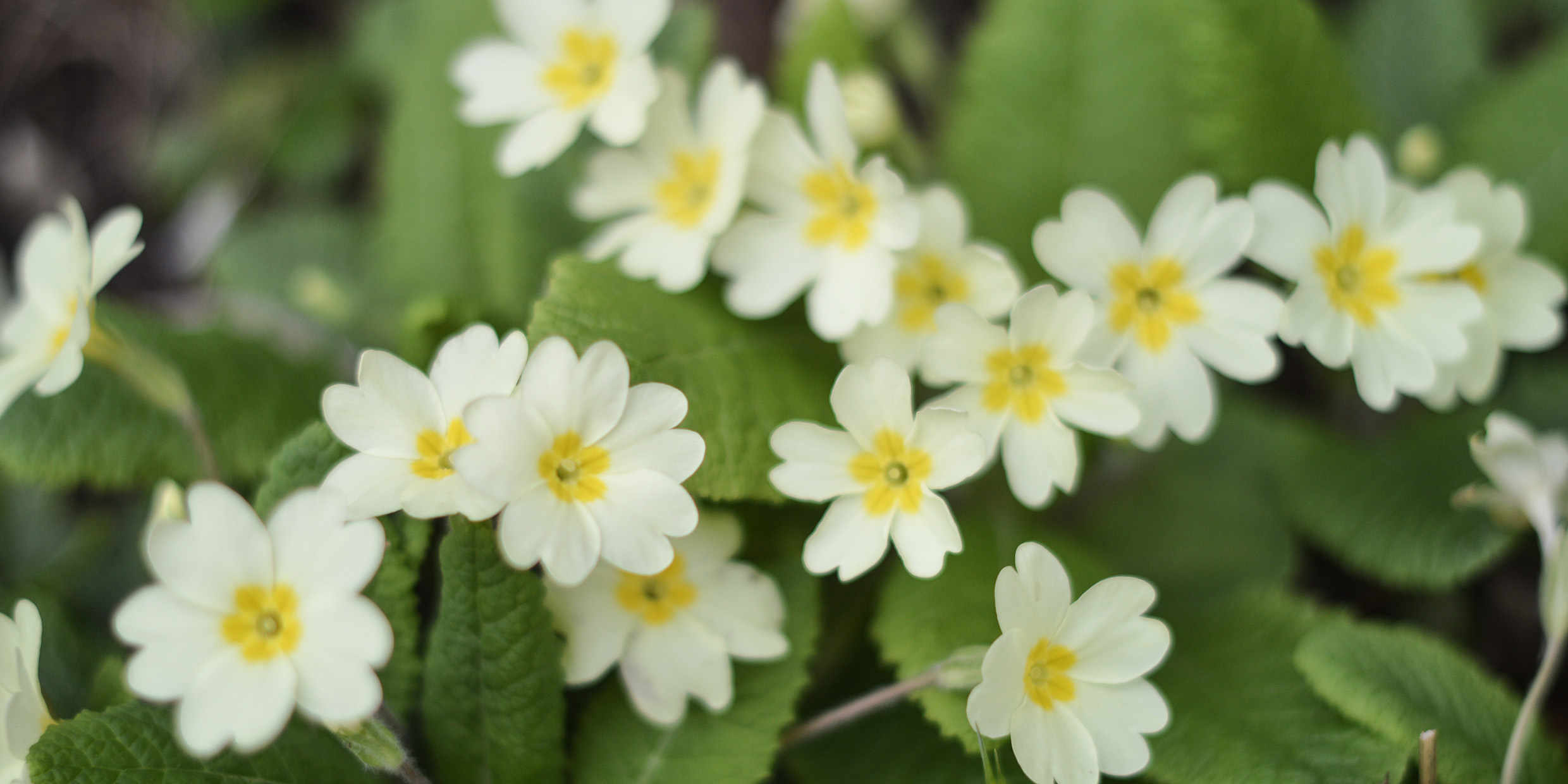Originally published 9 February 1987
Come with me for a Valentine’s walk down the primrose path. It is a walk of spring, of young love, and of dalliance. Just now, in the midst of winter, we can use a taste of spring.
Not long ago I took a group of my students on a winter nature walk. One of them was carrying a volume of the poems of John Donne, a contemporary of Shakespeare and Francis Bacon. Noticing this, I plucked up a stalk of evening primrose from alongside the path. “Here,” I said, handing her the golden blossomless stalk. “Donne has a poem called ‘The Primrose.’ This is a primrose.”
The next day the young woman showed up at my office and asked me if the primrose, when in flower, has five petals. “No,” I replied, “I think it has only four.” Now, I must confess I wasn’t sure. I know the evening primrose best as a winter weed, not as a blossoming plant. It is a grand sort of weed, tall and luminous, tipped by gorgeous vase-like calyxes clustered close to the stem.
We looked up the evening primrose in my Peterson’s Wildflower Guide. As I thought, it is a four-petaled plant. “That’s funny,” said my young friend, “then the poem doesn’t make much sense.” We looked at Donne’s poem, written at about the time the Pilgrims landed at Plymouth, which begins:
Upon this Primrose hill,
Where, if Heav'n would distil
A shower of rain, each several drop might go
To his own primrose…
As we read on, it became clear that the primrose of the poem is a five-petaled plant, that can occasionally be found with four petals or with six. These atypical blossoms the poet rejects as being something less or more than the perfect five-petaled flower that he seeks. The flower, in turn, stands for the woman the poet loves. In Donne’s time the number five represented the ideal feminine nature, combining in itself both the odd (three) and the even (two).
It was clear that John Donne was not writing about the evening primrose, the only flower in New England I knew of by that name. The evening primrose, we discovered from Peterson’s guide, is not even a member of the primrose family. In our area of the world, the common members of the primrose family are the starflower, the yellow loosestrifes, and the scarlet pimpernel.
A trip to the library was required to identify the flower of Donne’s poem. And there we found it, the true primrose, a small moon-colored flower of five petals that is common to the fields and hedgerows of Britain. This is the blossom, cousin of the cowslip, that is mentioned so often by Shakespeare, Milton, and Donne.
There was a time in our history when almost every common flower or plant had a symbolic significance. The rose, the lily, the forget- me-not — each carried a message in the language of love. In this more scientific age we have lost most of that rich treasury of flower lore, lore that entangles the primrose in a tapestry of meaning.
The name of the flower derives from the Italian primaverola, a diminutive contraction of fior di prima vera, the first flower of spring. A Renaissance calendar of the flowers lists the primrose as one of the earliest flowers of the season and a token of love:
February 2. The Snow-drop in purest white arraie
First rears her head on Candlemas daie.
February 14. While the Crocus hastens to the shrine
Of Primrose love on Saint Valentine.
In the lore of flowers the primrose is wreathed in romance.
A maid who found a primrose with six petals, rather than the usual number five, and who tucked it into her bosom was sure to find true love. Shakespeare’s “primrose path of dalliance” was taken by many young lovers moved by romantic desires.
Hundreds of the wildflowers of New England are immigrants from Britain. Many of them arrived here with the first colonists, and with them came the symbolic lore of plants. In the case of the primrose, the lore arrived without the flower. Many of us have read of Shakespeare’s “primrose path” and Milton’s “soft silken primrose” without ever knowing the plant that was referred to. And now that I think of it, the stiff and lanky evening primrose of New England’s roadside verges is an unlikely candidate for the poet’s delicate flower of spring that turns a young man’s fancy and sets a maid’s heart afluttering.
Our history began as a colony of Britain. From Britain came our language and a great part of our literature. Also from Britain came yarrow, mullein, Queen Anne’s lace, lady’s thumb, butter-and-eggs, hawkweed, chickory, the common dandelion, and a host of other common plants. The evening primrose, a native of North America, was quick to transplant itself to Europe. But somehow, in all of this trans-Atlantic botanical traffic, the poet’s primrose got left behind, and with it a literary invitation to true-love in the spring. Perhaps so amorous a plant could not find a congenial place in the stern company of Puritans and Pilgrims.



